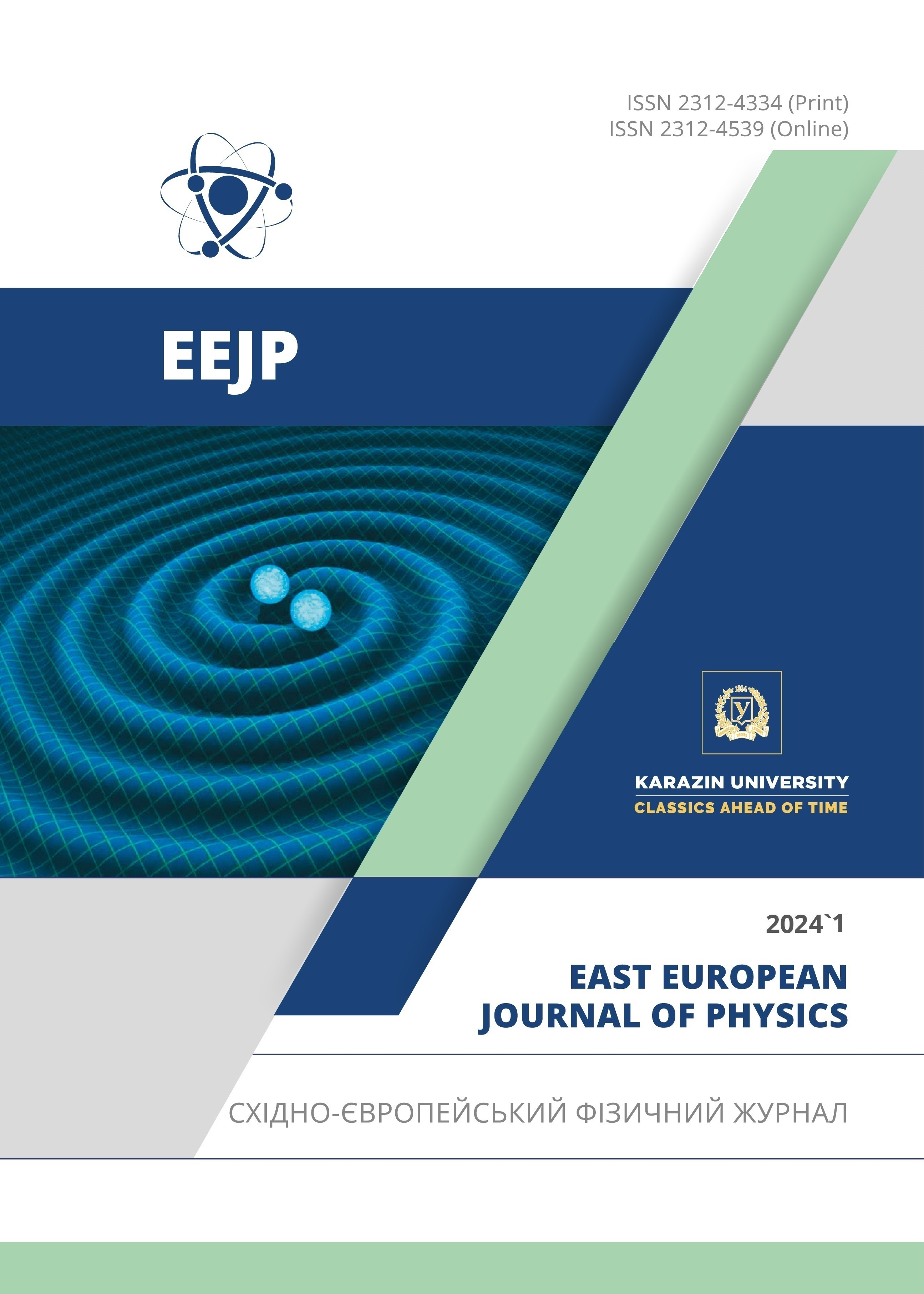Study of the Charge Carrier Collection Coefficient of Silicon p-i-n Photodiodes
Abstract
The paper investigates the collection coefficient of minority charge carriers in silicon p-i-n photodiodes and the influence of certain technological factors on it. It has been found that the diffusion length of minority charge carriers and the resistivity of the material have a significant effect on the value of the collection coefficient, since the collection area of photogenerated charge carriers increases with increasing these parameters. It was also found that an effective method to increase the collection coefficient of photodiodes is to ensure that the thickness of the high-resistance region of the photodiode is equal to the sum of the diffusion length of minority charge carriers and the width of the space charge region. The effect of the concentration of dopants on the responsivity and collection coefficient is investigated. It was found that, in contrast to the calculated data, in which the collection coefficient increases with decreasing concentrations of phosphorus and boron, in the experimental data, with decreasing concentrations of impurities, the responsivity and, accordingly, the collection coefficient decrease due to a decrease in the degree of heterogenization and, as a result, a decrease in the width of the space charge region and the diffusion length of minority charge carriers.
Downloads
References
C.M. Proctor, M. Kuik, and T.Q. Nguyen, Progress in Polymer Science, 38(12), 1941 (2013). https://doi.org/10.1016/j.progpolymsci.2013.08.008
B. Yang, F. Zhang, J. Chen, S. Yang, X. Xia, T. Pullerits, and K. Han, Advanced Materials, 29(40), 1703758 (2017). https://doi.org/10.1002/adma.201703758
A. Yazmaciyan, P. Meredith and A. Armin, Advanced Optical Materials, 7(8), 1801543 (2019). https://doi.org/10.1002/adom.201801543
S. Singh, S. Kumar and M. Deo, Opt. Quant. Electron., 55, 846 (2023). https://doi.org/10.1007/s11082-023-05127-7
S. Zie, Physics of semiconductor devices, (Mir, Moscow, 1984). (in Russian).
M.S. Kukurudziak, and E.V. Maistruk, Semicond. Sci. Technol. 38, 085007 (2023). https://doi.org/10.1088/1361-6641/acdf14
K.O. Boltar, I. V. Chinareva, A.A. Lopukhin and N.I. Yakovleva, Appl. Phys. 5, 10 (2013).
S. Zhang, Y. Yao, and D. Hu, Energies, 12(6), 1168 (2019). https://doi.org/10.3390/en12061168
S.B. Khan, S. Irfan, Z. Zhuanghao, and S.L. Lee, Materials, 12(9), 1483 (2019). https://doi.org/10.3390/ma12091483
M.S. Kukurudziak and E.V. Maistruk, in: Fifteenth International Conference on Correlation Optics, 121261V (SPIE, Chernivtsi, 2021). https://doi.org/10.1117/12.2616170
M.S. Kukurudziak, Semiconductor Physics, Quantum Electronics & Optoelectronics, 25(4), 385 (2022). https://doi.org/10.15407/spqeo25.04.385
A.V. Igo, Optics and Spectroscopy, 128, 1125-1130 (2020). https://doi.org/10.1134/S0030400X20080135
M.S. Kukurudziak, and E.V. Maistruk, in: 2022 IEEE 3rd KhPI Week on Advanced Technology (KhPIWeek) (IEEE, Kharkiv,
, pp. 1-6. https://doi.org/10.1109/KhPIWeek57572.2022.9916420
M.S. Kukurudziak, East Eur. J. Phys. 2, 311 (2023), https://doi.org/10.26565/2312-4334-2023-2-36
N. M. Tugov, B.A. Glebov, and N. A. Charykov, Semiconductor devices: Textbook for universities, edited by V.A. Labuntsov, (Energoatomizdat, Moscow, 1990). (in Russian)
N.I. Koshkin, and M.G. Shirkevich, Handbook of Elementary Physics, (State Publishing House of Physical and Mathematical Literature, Moscow, 1962). (in Russian)
L.K. Buzanova, and A.Y. Gliberman, Semiconductor photodetectors (Energia, Moscow, 1976). (in Russian)
A.V. Fedorenko, Technology and design in electronic equipment, 17(3–4), 17 (2020).
https://doi.org/10.15222/ TKEA2020.3-4.17 (in Ukrainian)
M.S. Kukurudziak, Surface Chemistry, Physics and Technology, 14(1), 42 (2023). https://doi.org/10.15407/hftp14.01.042 (in Ukrainian)
A.A. Ascheulov, Y.G. Dobrovolsky and V.M. Godovanyuk. Scientific Bulletin of Chernivtsi University, 32, 135-142 (1998).
K. Ravey, Defects and impurities in semiconductor silicon, (Trans.), edited by G.N. Gorina, (Mir, Moscow, 1984). (in Russian).
Copyright (c) 2024 Mykola S. Kukurudziak, Eduard V. Maistruk

This work is licensed under a Creative Commons Attribution 4.0 International License.
Authors who publish with this journal agree to the following terms:
- Authors retain copyright and grant the journal right of first publication with the work simultaneously licensed under a Creative Commons Attribution License that allows others to share the work with an acknowledgment of the work's authorship and initial publication in this journal.
- Authors are able to enter into separate, additional contractual arrangements for the non-exclusive distribution of the journal's published version of the work (e.g., post it to an institutional repository or publish it in a book), with an acknowledgment of its initial publication in this journal.
- Authors are permitted and encouraged to post their work online (e.g., in institutional repositories or on their website) prior to and during the submission process, as it can lead to productive exchanges, as well as earlier and greater citation of published work (See The Effect of Open Access).








